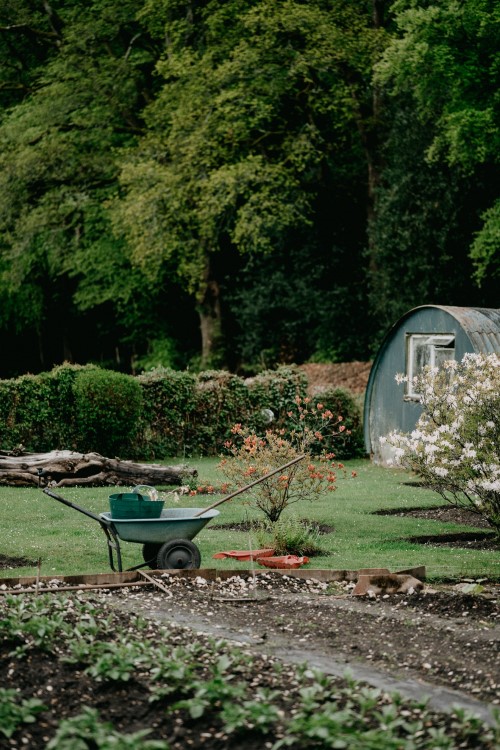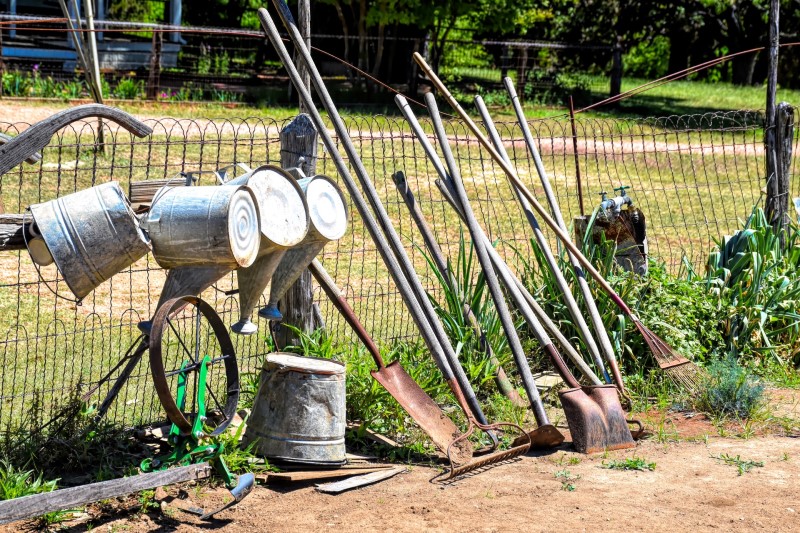Digging into Spring
By Josh Reilly
There are plenty of ways to economize in the garden. Grow drought tolerant plants and water less frequently. Plant perennials, shrubs, and trees in Fall to take advantage of the rains and lower weed competition. Buy plants on the “Sale” table at your nursery or garden center. Grow plants from seed. Propagate your own plants from cuttings, seeds, divisions, etc. Join an exchange group and adopt other gardener’s giveaways.
Avoid excessive thrift, however, with tools. On rare occasions, retailers offer quality tools at “sale” prices to reduce excess inventory and make room for new product lines. Otherwise, don’t skimp. Poor quality tools will fall apart quickly. Whatever you save in cash, you’ll likely pay with your back, wrists, hands, and legs, not to mention your patience. There is much that can intrude on our bliss in the garden. No reason to add cheap tools, bad ergonomics, and repetitive stress injury.

The best tools share certain desired features. I prefer wood handles. Wood is firm but flexible under a load. Wood will absorb shock and vibration, which helps to protect your joints. With proper care, good wood tools will last about as long as you will in the garden. And I like the feel of a wood handle versus plastic, metal, or fiberglass. Tool manufacturers may claim that these other materials are as good or better at absorbing vibration. Could be. My experience, however, is that wood is best.
Look also for forged blades with secure attachments to the handle. When buying pruning tools look for quality metal blades. High carbon steel, for instance, is hard enough to do the work but soft enough to sharpen properly. A dull blade makes a poor cut, potentially harming the plant. It also requires more force, a primary risk factor for repetitive stress injuries. Do yourself a big favor and keep a good, sharp edge on your cutting tools.
I prefer long handled digging and cultivation tools. Years ago, I often used so-called “D-handled” rectangular-bladed spades and digging forks. This is largely because I was young and limber and because I was an almost religious adherent to a completely daft vegetable garden preparation method called “double digging.” More on this in another column. The D handle may be easier for some users’ wrists and forearms, depending on their technique. A shorter handle, however, means less leverage and more work for the lower back.
For all-around versatility and performance, get a round bladed, long handled shovel with a footrest on the top of the blade. The rectangular head of a garden spade is great for tidy rows, corners, and edges. Fair enough. But if you are growing vegetables in 4’x 8’ raised beds, your siding takes care of that. I use digging forks primarily for tasks such as dividing native Douglas Irises or daffodils. You need the fork to get under an established clump of bulbs and lift them out while loosening and separating the bulbs. I also use the fork to remove plants with large fibrous root balls. Save the pitchfork for turning compost and lifting hay or straw. It’s not a digging tool.
Another essential tool is the soil rake. Once a planting bed has been cultivated, prior to mulching, planting, or seeding, use a soil rake to obtain a smooth, even surface, relatively free of clods and remnant weeds or cuttings. There is a sort of zen in raking gravel paths or mulch with this tool. Get a leaf rake, however, for your Fall cleanup. The soil rake won’t work.
I have never understood the popularity of standard hoes. I much prefer arrowhead or diamond head hoes. Their blades slice cleanly through gravel and dirt, severing or pulling weed roots up. The points at either end of the diamond head hoe are superb for getting weeds out from between pavers, bed edging, and in rock gardens.
Josh Reilly, aka Uncle Skip, writes about seasonal gardening from his home in beautiful Ben Lomond, California.
Featured photo by Ray Shrewsberry | Garden tools at the ready
The San Lorenzo Valley Post is your essential guide to life in the Santa Cruz Mountains. We're dedicated to delivering the latest news, events, and stories that matter to our community. From local government to schools, from environmental issues to the arts, we're committed to providing comprehensive and unbiased coverage. We believe in the power of community journalism and strive to be a platform for diverse voices.





